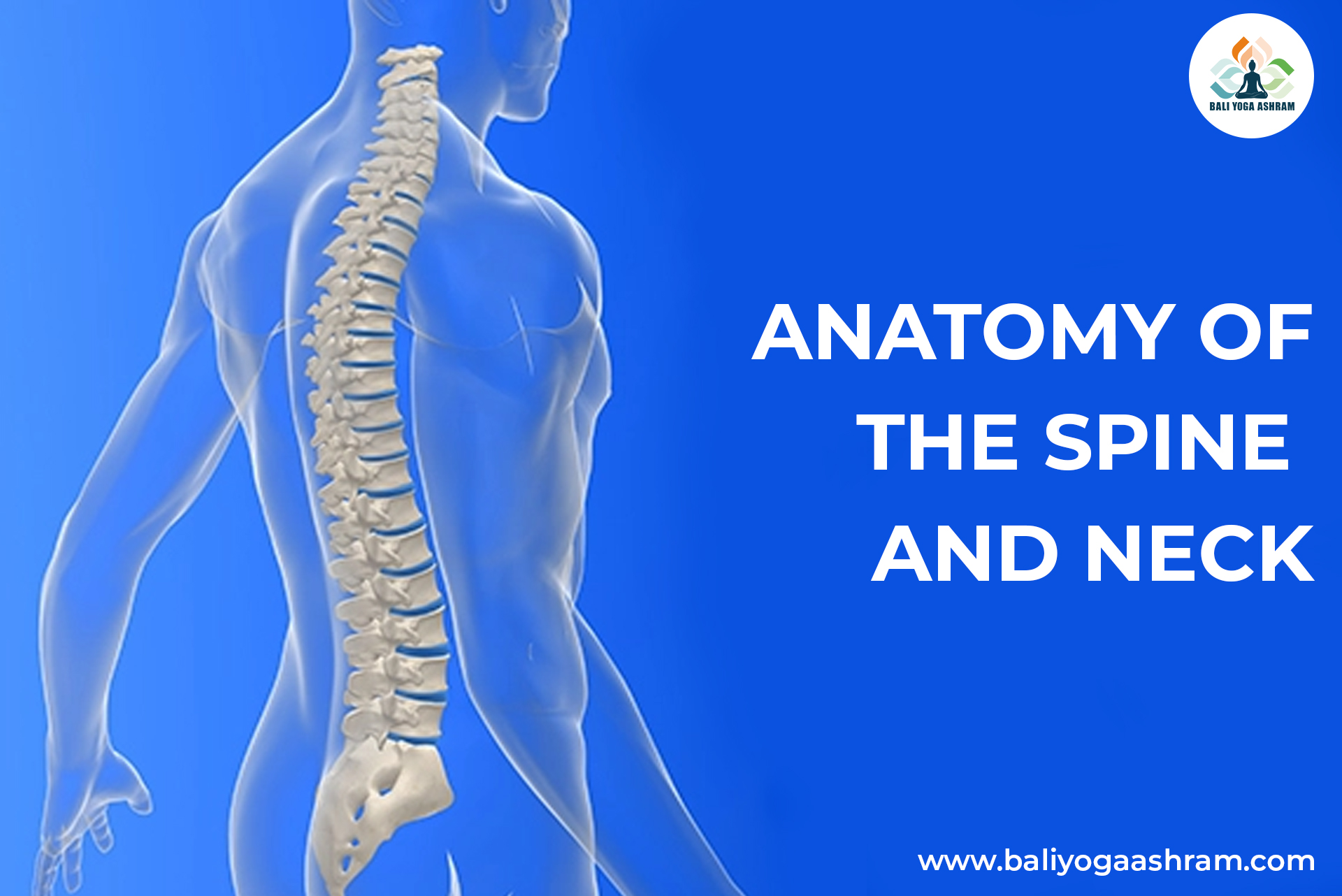
Anatomy of the Spine and Neck
What is the Spine Made Of?
The spine is made up of vertebrae, spinal discs, and the spinal cord.
Vertebrae are small, circular portions of bone stacked on top of each other. There are 33 vertebrae in total making up the structure of the spine.
Between each vertebrae are spinal discs. Spinal discs are rubber-like discs that act as padding for the vertebrae. They work as shock absorbers and keep the vertebrae from rubbing against each other.
The vertebrae and spinal discs house the spinal canal. Inside the spinal canal lives the spinal cord and nerves. The vertebrae and spinal discs act as protection for the spinal canal and what lies inside.
What Are the 5 Parts of the Spine?
1.Cervical Spine
The cervical spine consists of 7 vertebrae and 8 nerves, each one named C1 through C8.
The C1 vertebrae starts at the very top of your spine and is known as the “atlas.” The C2 vertebrae, located just beneath the C1 is known as the “axis.” The C1, C2, and C3 nerves work together to control the majority of movement in the neck and support the weight of the skull.
The C4 nerve controls movement in the upper shoulders and is connected to your diaphragm.
The C5 nerve controls the deltoid muscles in your shoulders. It provides sensation to your upper arm and elbow.
The C6, C7, and C8 nerves provide sensation through your arms and hands. The C6 controls the bicep and the C7 controls the tricep. The C8 nerve provides sensation down your forearm.
2.Thoracic Spine
The thoracic spine is the longest section of the spine. It starts at the base of your neck and ends at the bottom of your ribs. The thoracic spine is made up of 12 vertebrae labeled T1 through T12. Each vertebrae also has corresponding nerves.
The T1 and T2 nerves provide sensation throughout your chest, arms, and hands.
The T3 through T5 nerves also span across your chest. These nerves control your rib cage, lungs, and diaphragm and work to help you breathe.
The T6 through T12 nerves span across your abdominal area and back. These nerves control your posture and help you to balance.
The thoracic spine as a whole is responsible for supporting your chest and abdomen, facilitating movement, and providing attachments for your ribs.
3.Lumbar Spine
The lumbar spine is located in your lower back and consists of 5 vertebrae and associated nerves labeled L1 through L5.
The L1 nerve provides sensation to your groin and genital area. The L1 helps to control movement of the hips.
The L2 through L4 nerves span down the front of your thighs and the inner part of your lower leg. They are also responsible for hip movement, as well as movement for the knees.
The L5 nerve provides sensation to the outer part of your lower legs and the tops of your feet. It is responsible for movement in the hips, knees, feet, and toes.
The Sciatic nerve consists of your L4, L5, and other sacral nerves. It starts in the rear pelvis, runs down the back of your leg, and ends in your foot.
4.Sacral Spine
The sacral region of your spine is made up of 5 vertebrae that are fused together to create one large, triangular shaped bone. Although fused, the sacral vertebrae and associated nerves are still labeled S1 through S5.
The sacral spine is responsible for supporting the weight of the body and facilitating hip and leg movement.
5.Coccyx (Tailbone)
The coccyx, often referred to as the tailbone, is located at the base of the spine and consists of 4 fused vertebrae.
The coccyx is responsible for bearing weight of the body and acts as an insertion point for multiple muscles, ligaments, and tendons.
Sciatic Nerve
The sciatic nerve is made up of your L4 and L5 nerves. It starts in the rear pelvis and runs down the leg, all the way to the foot.
Many people struggle with pain in the lower back or back of the leg due to issues with the sciatic nerve. This pain can feel like-
Sciatic pain occurs because of injury or compression of the sciatic nerve. This usually happens in the space between the L5 nerve and the S1 nerve because this area of the spine is responsible for heavy weight bearing and lots of bending and twisting movements. It is common for the nerve to become pinched or compressed when there is a problem with a surrounding spinal disc. An injured spinal disc is often called a herniated, slipped, or ruptured disc.
Sciatic pain can be relieved by the use of hot or cold packs, stretching, massage, or in severe cases, surgery.
What are the Main Functions of the Spine?
The spine helps you to sit, stand, walk, twist and bend.
It provides structural support for your body and works to maintain proper posture and balance.
The spine contains and protects the spinal canal which holds many of the nerves associated with your central nervous system.
Tips for Maintaining a Healthy Spine:
1.Stretch and Strengthen the Back
Keeping the muscles associated with the spine flexible and strong will help to keep the spine safe and in proper alignment. A strong and flexible spine is at a much lower risk of pain or injury.
2.Maintain a Healthy Weight
The spine is responsible for bearing the weight of the core and upper body. Maintaining a healthy weight will reduce the pressure on the spine, keeping it healthy and mobile.
3.Be Mindful of Heavy Lifting
Lifting heavy weight, and bending to do so, places a large amount of strain on the spine. Heavy lifting is one of the leading causes of back pain and spinal injury.
If you do choose to lift something heavy, proper posture should be maintained: keep the back straight and tall, bend your knees, and use your leg muscles to lift.
4.Stand Whenever Possible
When sitting, it is harder to maintain proper spinal alignment. Sitting often causes the back to hunch and the spine to adopt unnecessary curves. This happens because of how the spine bears the shift in body weight.
Choosing to stand whenever possible will help you to maintain a neutral spine, keeping your spine healthy, strong, and flexible.

